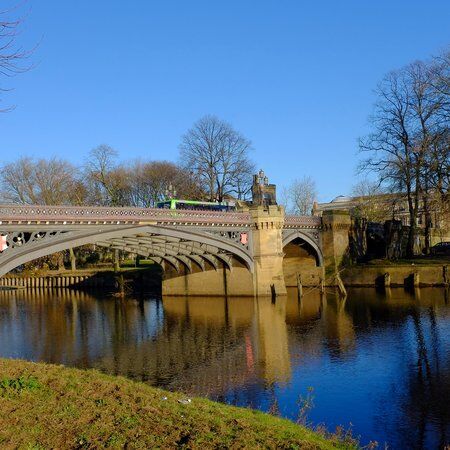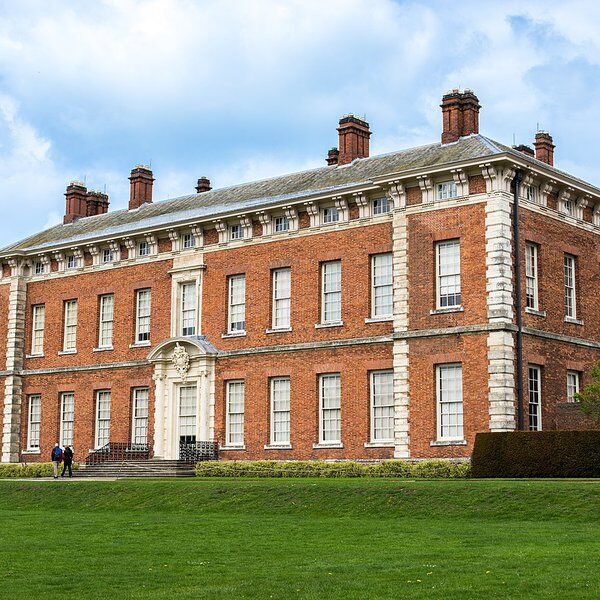Exploring Ouse Bridge in York
“The bridge is vastly strong, and has one arch which, they tell me, was near 70 foot in diameter; it is, without exception, the greatest in England, some say it’s as large as the Rialto at Venice, though I think not.”
The Ouse Bridge, centrally positioned among York's trio of iconic bridges, serves as a vital link connecting the city's major shopping and tourist hubs. While historically associated with the B1227 road, its official designation is rarely noted on maps or local signage. Running East to West within the Medieval Bar Walls, Ouse Bridge exists as the most ancient river crossing spot in York, with records dating back to the 9th century.
The bridge’s original Roman structure was succeeded by a Viking-built wooden bridge, which tragically collapsed in 1154 during a welcome gathering for St William of York. Subsequently, a stone bridge emerged, hosting a pioneering feature in 1367 — the first public toilets in Yorkshire and perhaps England.
Over time, the bridge underwent modifications, and in 1821, Peter Atkinson won a competition to replace its predecessor, earning it Grade II listed status. Today, the bridge is a reinforced concrete plate girder structure, carrying the M62 between Goole and Howden, a testament to its continued significance in York's evolving landscape.
The Tragic History of Ouse Bridge
Ouse Bridge has always been a crucial crossing site in York, spanning back to the Roman founding of the city. However, one cannot talk about the engineering and design of Ouse Bridge without mentioning the countless tragedies that befell the crossing throughout its history. Tragedies that in turn warranted entire remodels of the bridge.
For more information about the Romans in England read our other articles such as Mamucium.
The New Ouse Bridge: A York Miracle
One of the Ouse Bridge’s earliest (and most significant) tragedies occurred in 1154. As previously mentioned, a massive crowd had gathered to await the arrival and serve as a welcome party for the Archbishop William Fitzherbert. However, straining under the weight of the gatherers, the Ouse Bridge ultimately collapsed, sending people catapulting into the river below. Remarkably, amidst the chaos, no lives were lost, prompting some to consider it a miraculous intervention by the Archbishop, who was later canonised as Saint William. Today, the ‘miracle’ that is thought to have been performed at Ouse Bridge is closely linked to depictions of St. William in York.
Mediaeval Ouse Bridge
The mediaeval period witnessed a new stone Ouse Bridge featuring six arches and architectural components like the King's Bow and Queen's Bow. It was also adorned with houses and shops, reminiscent of Italy’s Ponte Vecchio or Ponte Rialto. By 1435 there were a reported 55 buildings along the Ouse Bridge. Due in part to the weight of these buildings and extreme weather conditions, tragedy struck in the winter of 1564. A combination of terrible thawing and flooding caused the central span to collapse, taking with it 12 buildings and the lives of 12 people.

Another New Ouse Bridge
Two years later a replacement bridge emerged. It was wisely built much higher above the water and featured five spans with an impressive central arch measuring 81 feet in width and over 17 feet in height. At the time it was one of the longest in Europe. This new bridge featured St William's Chapel, a council chamber next door, and even a city gaol beneath.
The Current Ouse Bridge
All was well for 250 years but as time progressed, the demands of a changing city led to the 1810 demolition of the mediaeval bridge. In its place, the current Ouse Bridge was unveiled in 1821. Initially imposing tolls to recover construction costs, the bridge played a vital role in the city's infrastructure. Notably, in 1829, the bridge accommodated traffic carrying materials for the repair of the minister after a fire, exempting them from toll charges.
In the 20th century Ouse Bridge witnessed a historic event in 1910 when a significant fire engulfed the Boyes department store. The department store, having been rebuilt, can still be seen along the current Ouse Bridge today.
Other Bridges in York
Among Ouse Bridge, and treasures like the Scarborough Rail Bridge built in 1845 and the Foss Bridge built in 1811 to connect Fossgate and Walmgate, other crossings in York include Lendal and Skeldergate bridges.
Lendal Bridge
The creation of the current Ouse Bridge was closely followed in the mid to late 19th by two more bridges. They were Victorian in design and the first, finished in 1861, was named Lendal Bridge. Designed by architect Thomas Page, who was also responsible for London’s Westminster Bridge, Lendal Bridge replaced a former ferry service that ran between Barker Tower and Lendal Tower. Replacing this service necessitated compensation for the ferryman but did successfully provide easier access to York’s increasingly busy railway station.

Today, the toll booths that were used until 1894, to recoup the costs of the bridge’s construction, can still be seen along Lendal Bridge, although they now house gift shops and cafes.

Skeldergate Bridge
The second bridge built in the Victorian era, though 20 years later, was Skeldergate Bridge, which also replaced a ferry service. Because of its height the original plans for Skeldergate Bridge were altered during the design stage to allow the bridge to open and accommodate larger ships. It was last opened in 1975, and the winding mechanism has since been removed.

Our Thoughts…
In its enduring presence, the Ouse Bridge is not only a practical structure linking different parts of York, but a permanent link to the city’s past. Whether you cross it as part of your daily routine or pause to admire its design and surroundings, the Ouse Bridge invites you to consider the charming narrative of this city by the river.
Ready to discover more of what York has to offer?
CityDays have FOUR outdoor treasure hunts in York to choose from, including our brand new trail Gourmet Xmas Food Hunt. All combine the fun of an escape room with the historic facts and whimsical trivia of a walking tour!
Take the stress out of planning your visit to York and book your adventure today!
Not visiting York this time? Don’t worry, you’ll find us all over the world.












